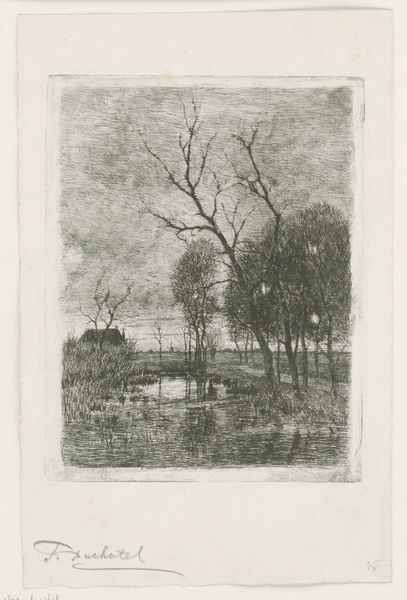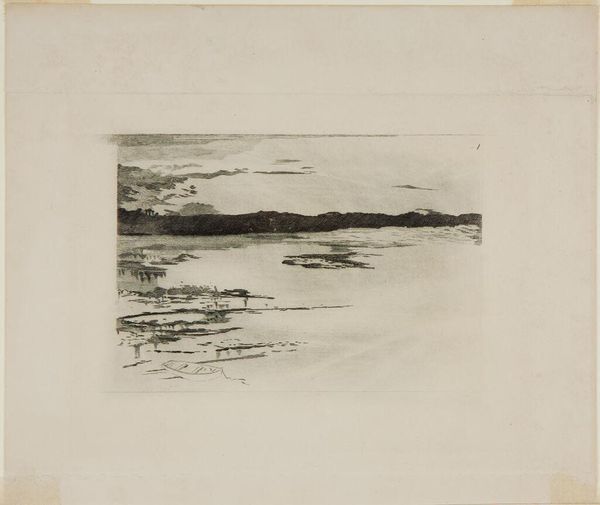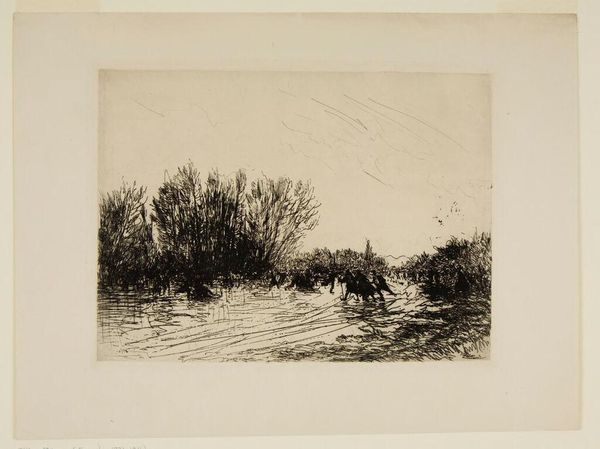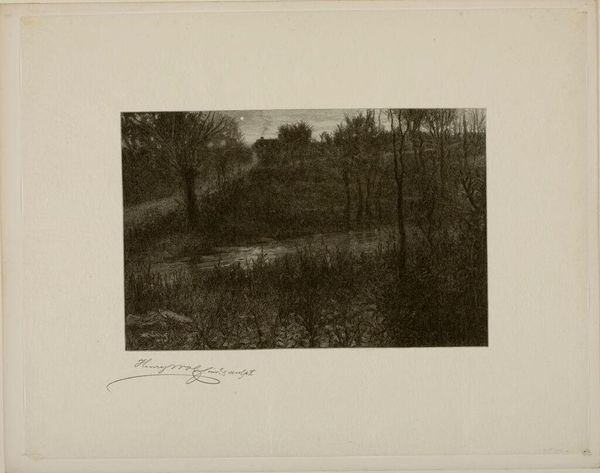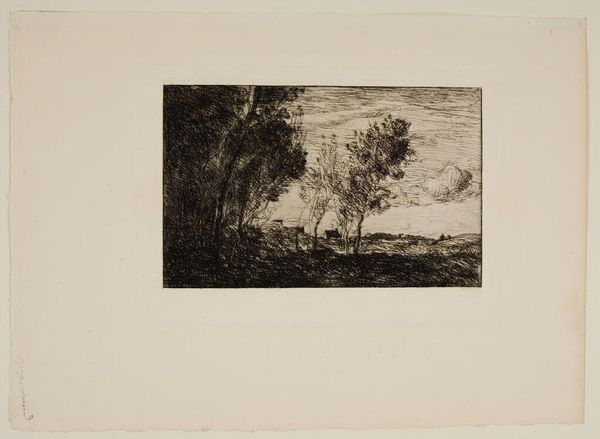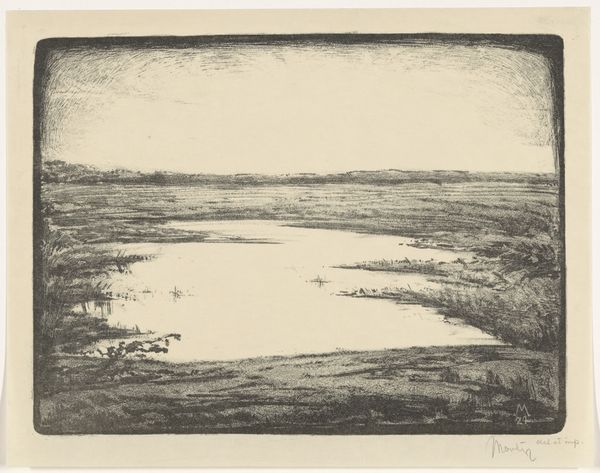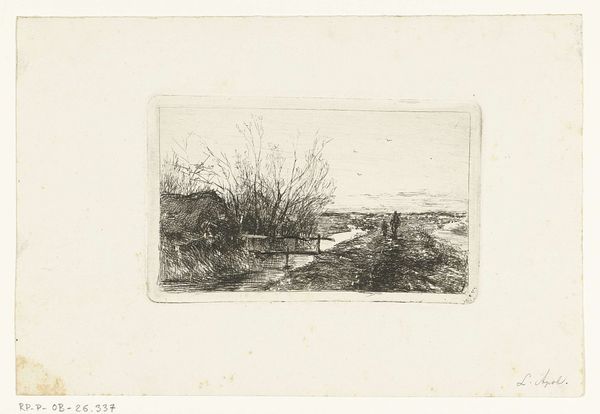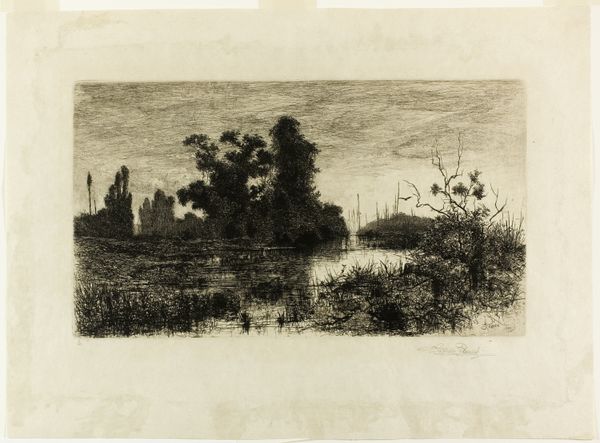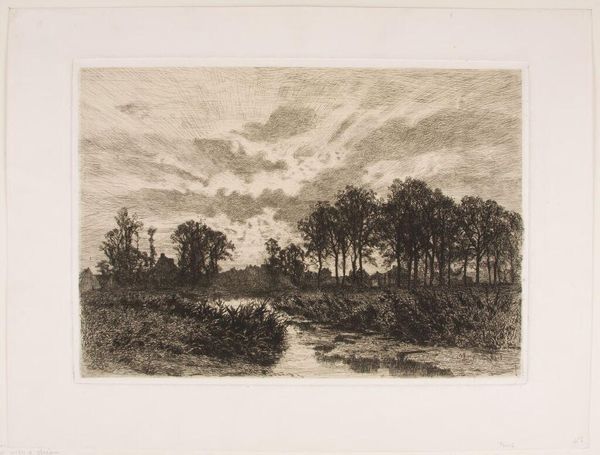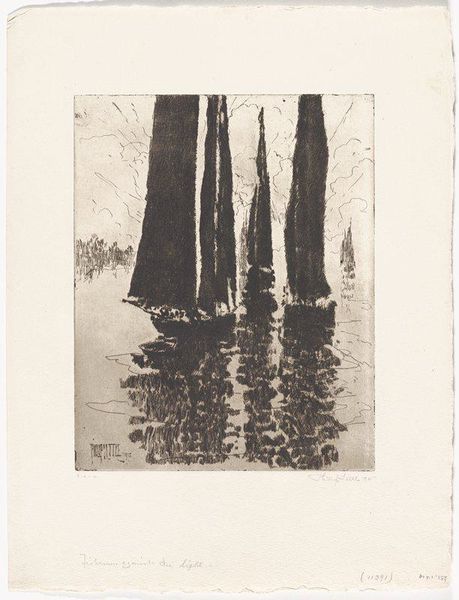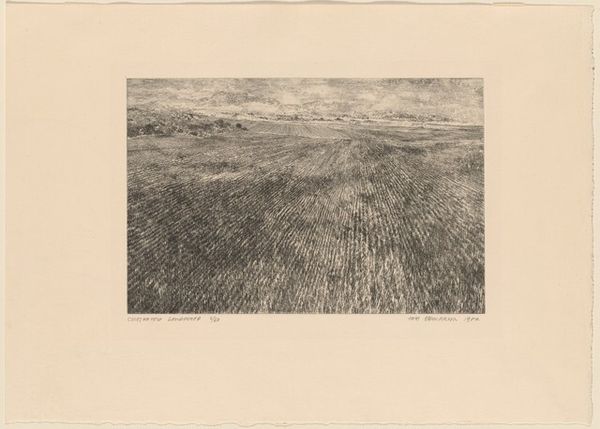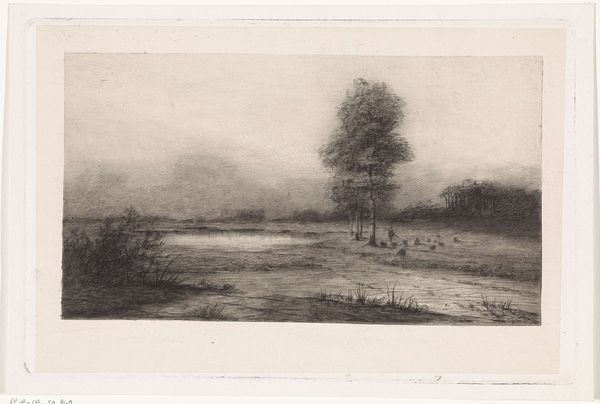
Copyright: CC0 1.0
Curator: Before us, we have Alexander Shilling's "Dutch Canal," part of the Harvard Art Museums collection. Editor: Immediately, I'm struck by the print's somber mood. The stark contrasts create a scene both serene and melancholic. Curator: Shilling, active in the late 19th and early 20th centuries, often depicted landscapes with a focus on tonal qualities. This etching is a prime example. He seems to suggest an analysis of the subject through the medium. Editor: Indeed, the canal serves as a compositional spine. The dark, textured foreground gradually softens into the lighter tones of the background, guiding the eye. But, is this depiction of the canal an attempt to evoke the social conditions of the time? Curator: Possibly. Canals were vital for trade, but also reflected the industrial growth impacting rural life. Shilling might be commenting on the changing landscape and its socioeconomic implications. Editor: I concede. The print's formal structure—the way light and shadow interact—certainly evokes deeper meanings beyond the purely aesthetic. Curator: Precisely. Art transcends mere depiction; it offers insights into society and ourselves. Editor: A worthwhile reflection; Shilling’s work invites us to ponder the landscape's role in shaping social narratives.
Comments
No comments
Be the first to comment and join the conversation on the ultimate creative platform.
